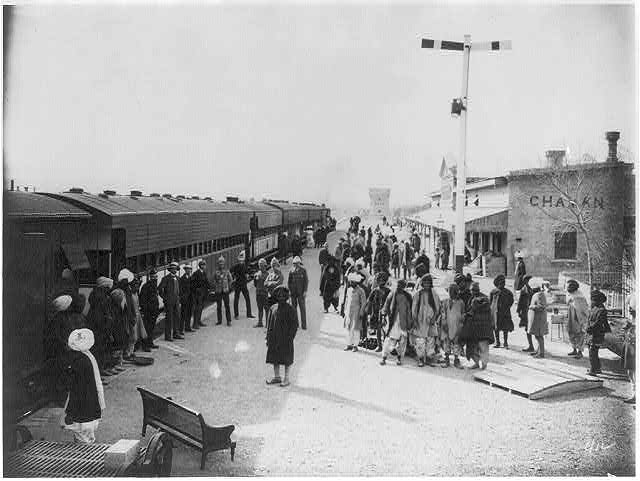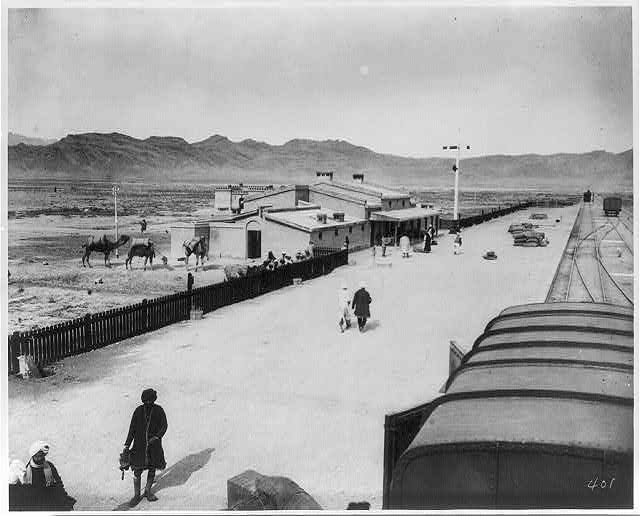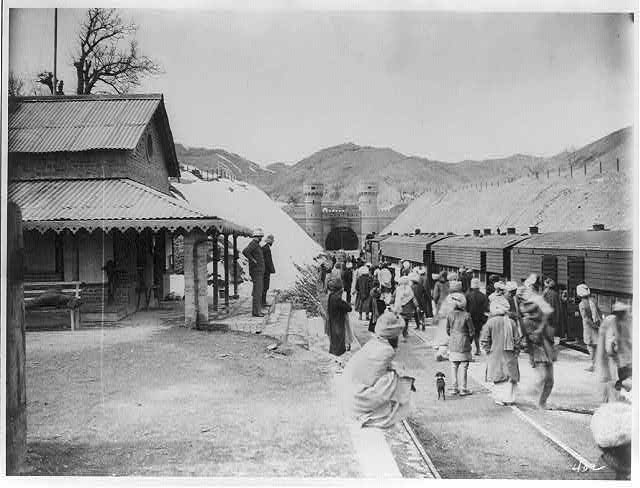A couple of photos of the Khyber Railway at the British museum website. As is all too common in Britain, the terms and conditions of the website are written in complicated legalese and don’t really give a clear answer to the question “can I use the image on my own website?”, so here are links instead.
Bagiari Cutting through the Khyber Pass
Photograph of a railway engine [2287] stopped in a narrow defile in the Khyber Pass (NWFP, Pakistan) with two persons standing next to it, one a local man and the other a European identified in the caption as Dr E S Appleby. A third local man stands on the front of the engine itself.
Photograph of a railway engine [2287] stopped at Jamrud Station (NWFP, Pakistan) at the eastern end of the Khyber Pass. Dr E S Appleby and ‘Guard’ Garlick said to be in the scene. The station name is visible in the photo.


